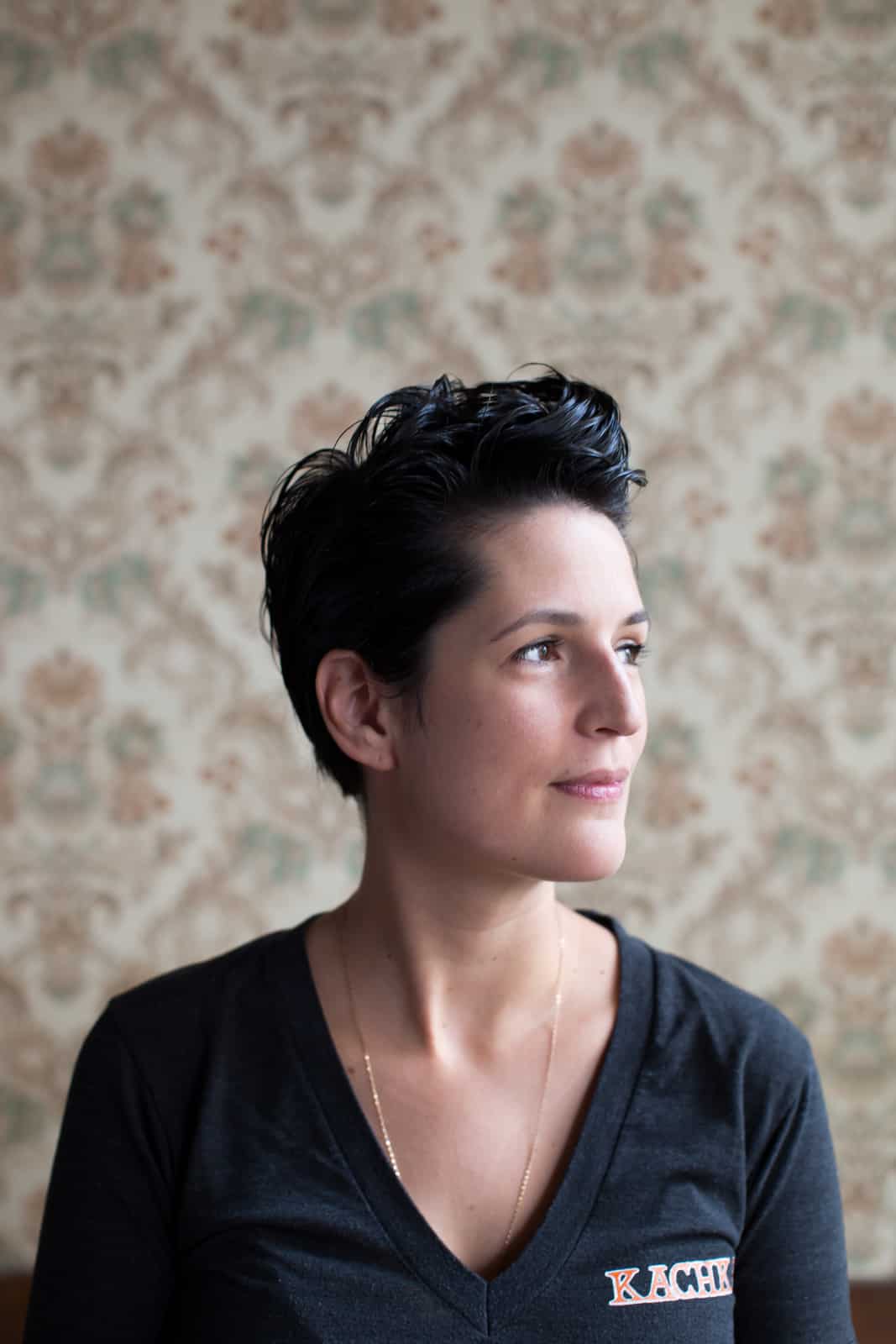
Chef Bonnie Morales grew up in Chicago with the food of the former Soviet Union, thanks to her large family of Belarusian immigrants. Though Morales initially pursued a career in design, she began cooking professionally in 2005, training at the Culinary Institute of America before working in restaurants in New York City and Chicago.
With the food of her roots calling to her, Morales and her husband-meets-business-partner, Israel, opened Kachka in Portland, Ore., in 2014 to a swarm of sudden popularity. At Kachka, Morales draws inspiration from former Soviet republics, dishing out pelmeni alongside pickled herring, khachapuri, caviar on rye, and crisp vodka. Kachka’s food has earned her a spot as a 2018 James Beard Award finalist for Best Chef: Northwest.
The couple have since expanded the Kachka brand. In 2017, Morales wrote her debut cookbook, Kachka: A Return to Russian Cooking (Flatiron; $40), to much acclaim. In 2018, they moved Kachka to a new location, while turning the old space into the more casual Kachinka. Amidst the flurry of her restaurant openings, we caught up with Morales to talk cheese and Russian cuisine.
On Food Foundations
I identify a lot with western Russian cuisine, which is a lot of root vegetables, a heavy influence of dill and parsley, a focus on soups, and lots of fermentation in general. Freshly cultured dairy is incredibly important. Sour cream, to me, is like a mother sauce; I use it in a million different ways.
On Winter Food
Like other countries with colder climates, you need to focus on preservation for the winter [in Russia]. Though a lot of countries have that pickling history, too, the Soviet Union was so rife with food shortages.
You couldn’t go to a store and buy what you wanted most of the time; a lot of people had to depend on personally preserving, pickling, jarring, and canning. That plays such a big role in defining the cuisine today.
On Farmer’s Cheese
So much farmer’s cheese—that is certainly the main thing when I think of Russian cheese. You can always buy farmer’s cheese in the store, but it’s so easy to make. If you have any milk that’s about to spoil, or you accidentally got too much this week, you can just turn it into farmer’s cheese. That was my mom’s thing to do, so we always had it at home. For me, the minute I taste farmer’s cheese I just think of being a kid.
It’s a really common filling for vareniki, which are Ukrainian dumplings. People make them neutral, or they’ll sweeten them. I make them incredibly savory with parmesan to give more umami and saltiness. A lot of people who have a history with these dumplings are surprised to see that mine are savory. Pan-fried with some herbs, it’s a really lovely and comforting way to use farmer’s cheese.
On Russian Cheese
Historically, there isn’t a strong tradition of rennet cheeses. There are a lot of semi-firm, mild cheeses, but they’re more commodity cheeses invented during the modern era to feed many mouths—not so much out of farmhouse tradition, although that is changing.
In the Baltics, they have more of a cheese culture, but even there, the cheeses that they press and age tend to come from farmer’s cheese. Kefir, sour cream, and farmer’s cheese are just huge.
On Making Things Herself
When it comes to fermenting or smoking or pretty much anything, we [at the restaurants] do it in-house. With aged cheese, we don’t have the best temperature or humidity control to make that right now—but maybe one day since it is something that I love. I am kind of a cheese nerd, so if I’m going to do it, I’d like to do it right.
On Local Cheese
For sulguni—a Georgian cheese with some of the same qualities of mozzarella—there is a producer in California that makes a smoked one, and it’s awesome. But we, for the most part, stick with imported. As far as I know, there’s not anyone locally who’s doing Russian-style cheeses. I would use local if I could.
On Unexpected Success
When we’d talk to other people in the industry, there was the sentiment that maybe Russian food just wasn’t going to take. We didn’t expect to open the doors and be busy right away, but it caught on like wildfire and that was incredible.
When we first opened the space, I was super nervous about putting anything “too Russian” on the menu that might scare people off. As people have seemed to want more, I feel a lot more confident being able to explore.
On the Future of Russian Food in the United States
I hope there are more people representing the food. If my generation of cooks doesn’t step up, then we’re going to lose a beautiful cultural heritage. I hope that starts to pick up.
This interview has been edited and condensed for clarity.
Photography by Carly Diaz.



